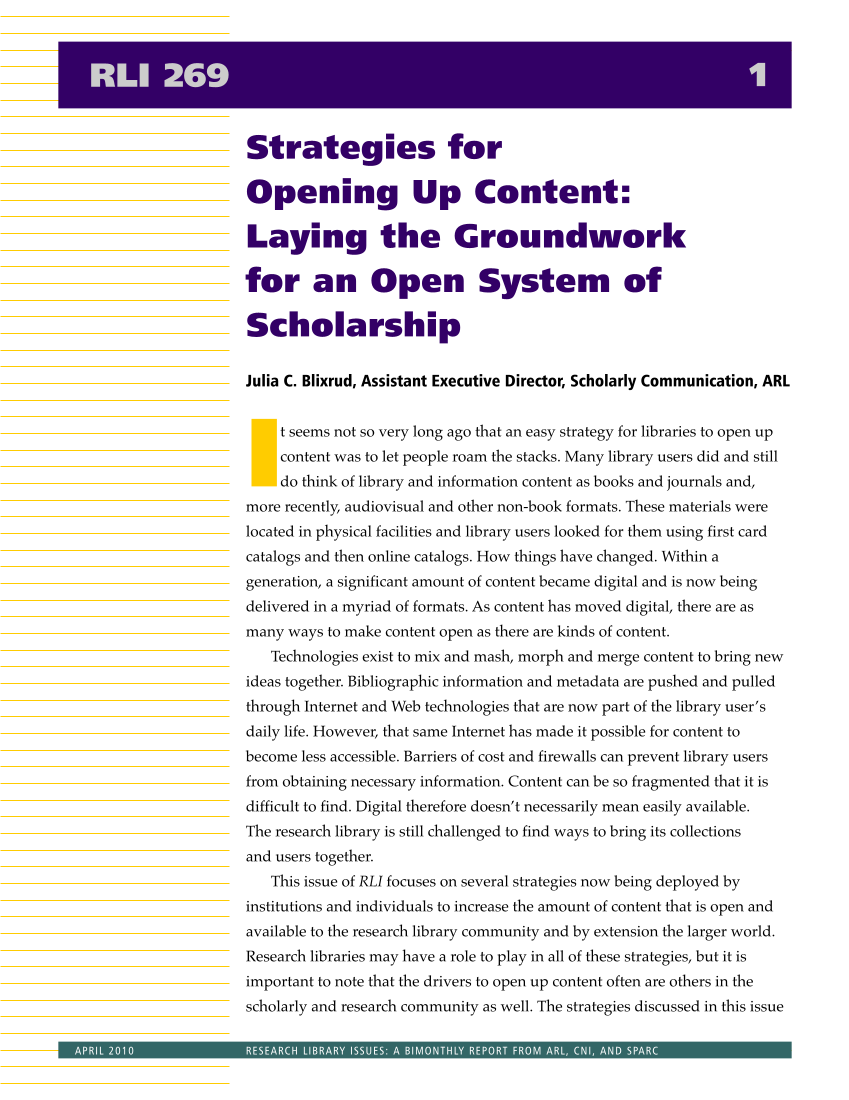Strategies for Opening Up Content: Laying the Groundwork for an Open System of Scholarship Julia C. Blixrud, Assistant Executive Director, Scholarly Communication, ARL I t seems not so very long ago that an easy strategy for libraries to open up content was to let people roam the stacks. Many library users did and still do think of library and information content as books and journals and, more recently, audiovisual and other non-book formats. These materials were located in physical facilities and library users looked for them using first card catalogs and then online catalogs. How things have changed. Within a generation, a significant amount of content became digital and is now being delivered in a myriad of formats. As content has moved digital, there are as many ways to make content open as there are kinds of content. Technologies exist to mix and mash, morph and merge content to bring new ideas together. Bibliographic information and metadata are pushed and pulled through Internet and Web technologies that are now part of the library user’s daily life. However, that same Internet has made it possible for content to become less accessible. Barriers of cost and firewalls can prevent library users from obtaining necessary information. Content can be so fragmented that it is difficult to find. Digital therefore doesn’t necessarily mean easily available. The research library is still challenged to find ways to bring its collections and users together. This issue of RLI focuses on several strategies now being deployed by institutions and individuals to increase the amount of content that is open and available to the research library community and by extension the larger world. Research libraries may have a role to play in all of these strategies, but it is important to note that the drivers to open up content often are others in the scholarly and research community as well. The strategies discussed in this issue RLI 269 1 APRIL 2010 RESEARCH LIBRARY ISSUES: A BIMONTHLY REPORT FROM ARL, CNI, AND SPARC





















